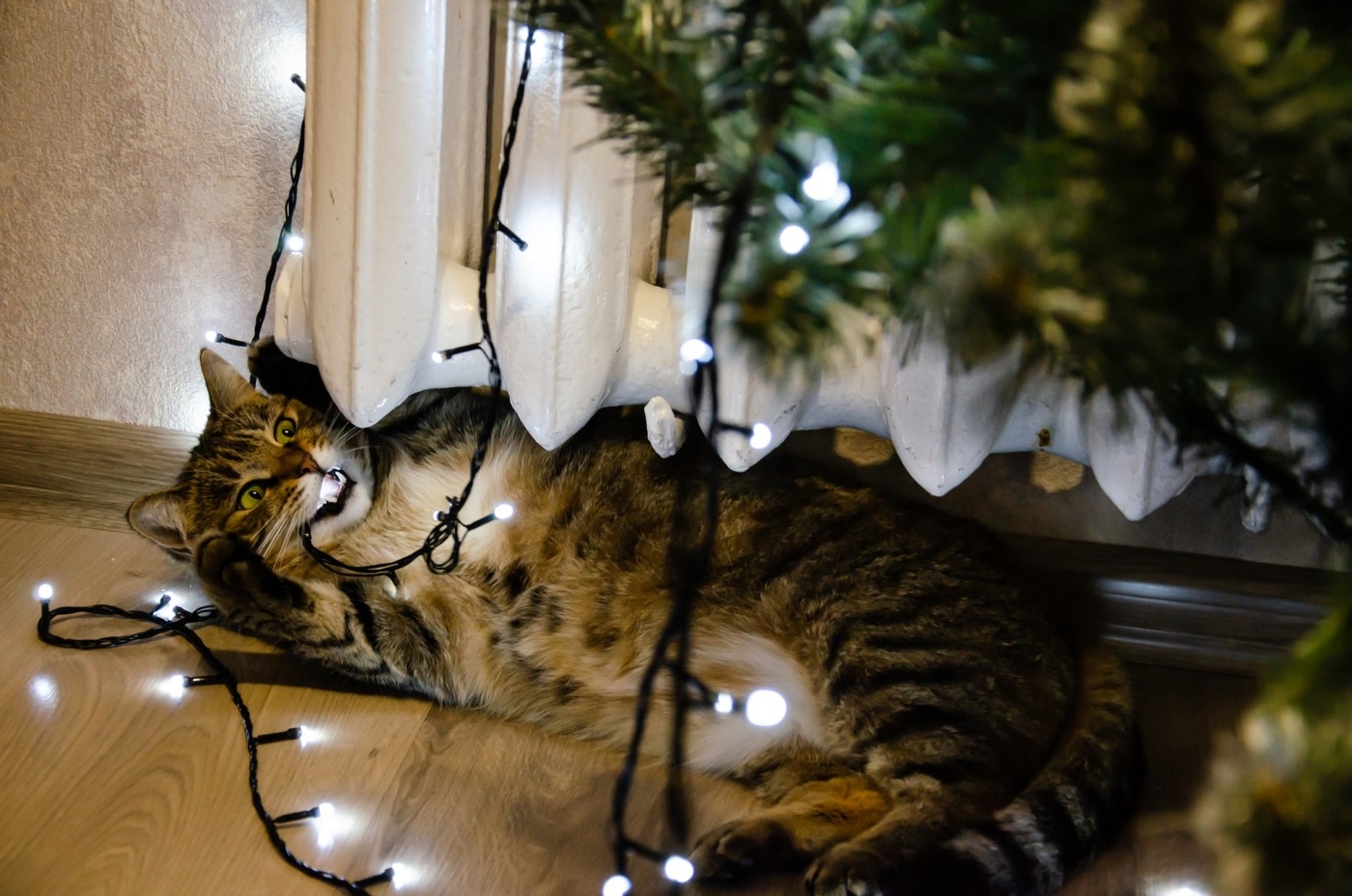The science of why our Christmas lights tangle
There are certain universal truths at Christmas time. You’ll hear some Mariah Carey and Michael Bublé. Someone will try and feed you Brussel sprouts. And, inevitably, you’ll get the Christmas lights out of the attic and find that they’ve inexplicably tangled. This is such an issue, a few years ago, Tesco hired temporary “Christmas light untanglers” for the festive season. But why should this be the case – why are Christmas lights so prone to tangling, and what can be done about it?
The phenomenon of why Christmas lights tangle was explored in 2007, when two University of California researchers published the first physical explanation of how and why jostled string tends to become knotted. Douglas Smith and Dorian Raymer placed a string (about the width of a computer mouse cable) being placed in a cubic box, which was rotated at constant angular velocity, causing the string to tumble. This experiment was conducted 3415 times, for a report published in the Proceedings of the National Academy of Science.
The report read: “We investigated the probability of knotting, the type of knots formed, and the dependence on string length. Before tumbling, the string was held vertically above the centre of the box and dropped in, creating a quasi random initial conformation. After tumbling, the box was opened and the ends of the string were lifted directly upward and joined to form a closed loop. A digital photo was taken whenever a complex knot was formed.”
The researchers found that a number of conditions had to occur before a knot formed. A minimum length of 18.124 inches (46.03 cm) was required of the piece of string. There had to be a certain amount of movement, as there was unlikely to be enough space for the ends of the strings to become tangled if there was too much string packed into the box. It also required a certain amount of flexibility – the more malleable, the easier it is for a knot to form.
The experiment resulted in a variety of knot types, with some producing up to 11 crossings, but the general takeaway was a simple one – the longer the string, the more likely that a knot will be formed. This is why garden hoses tend to tangle despite being fairly stiff – their length-to-diameter ratio is considerable. And, importantly, it takes “surprisingly little motion” for knots to form, and knots tend to accumulate rather than undo. It should be noted, of course, that Christmas lights are not string, and they have two other factors that help cause tangles. The cord to which the lights are attached gets tangled more easily as a result of its design, and the fact that the metal wire inside the cords is prone to a more natural curvature doesn’t help. As Jay Miller, senior research scientists at the Connecticut-based United Technologies Research Centre, said: “Christmas lights are typically spooled for shipping or packing, which bends metal wire past its ‘plastic limit,’ giving it natural curvature approximately the size of the spool it was wound around.”
The longer the string, the more likely that a knot will be formed
So, if Christmas lights are so prone to tangling, can we change that? One option might be to make the cord out of a stiff yet elastic material, which would more readily “bounce back” for the curvature imparted to it while in storage. This wouldn’t make too much of a difference while the lights protrude from the cord, but the advent of rope lights, using LEDs embedded within the cord itself, has changed things. They still tangle, but they’re easier to untangle. While you’re untangling, don’t start from the middle – a theorem proved by H. Schubert in 1953 proved that there are no inverses for knots, so “if the knot-free section is lengthening you will ultimately succeed”.
Ultimately, unless lights change, the solution may be a fundamentally low-tech one. Martha Stewart puts forward this solution: using flat cardboard sheets, cut slits down the sides of the cardboard and wrap the lights around it, slipping the ends of the wire through the slits. In this case, prevention may be the cure.

Comments